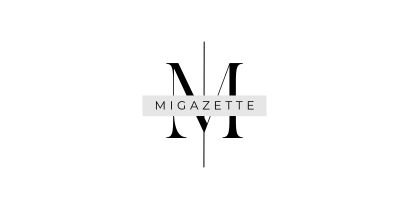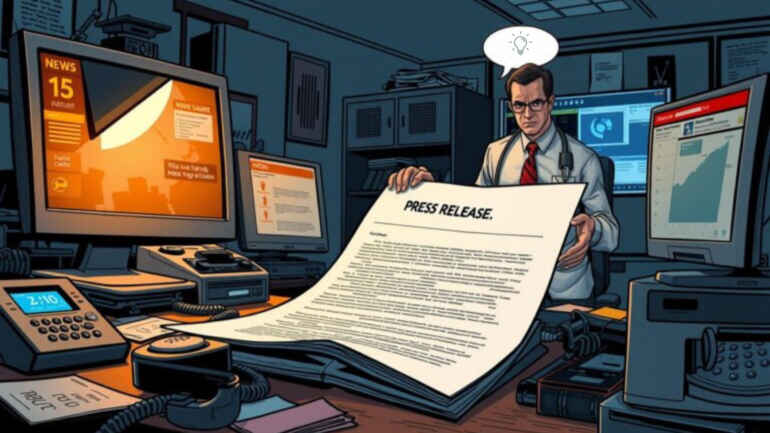Imagine it’s a quiet Friday afternoon when your company’s reputation is suddenly in the spotlight. An unexpected crisis hits, and your leadership team must act fast. The press release becomes a crucial tool, helping shape stories, assert control, and rebuild trust.
Almost 70% of businesses have faced a crisis in the last five years. Press releases can be the key to surviving such times. They help spread accurate info, fight off false claims, and build media connections. These are vital for managing a crisis well.
With thousands of emails flooding newsrooms daily, a well-made press release stands out. It gives the right info, shows your proactive steps, and helps restore your reputation. This is crucial for stakeholders, customers, and the public.
Key Takeaways
- Press releases are a powerful tool for crisis management, enabling organizations to control the narrative and rebuild trust.
- Nearly 70% of businesses have experienced a crisis in the past five years, underscoring the importance of effective crisis communication.
- Timely and transparent press releases can help battle misinformation, establish relationships with the media, and demonstrate your commitment to resolving the crisis.
- Well-crafted press releases can cut through the clutter of newsroom inboxes, ensuring your message reaches the right audiences.
- Utilizing press releases in crisis management can reduce the negative impact on a business’s image by up to 40%.
Understanding Press Release Crisis Management Fundamentals
In times of crisis, a press release can be a powerful tool for crisis control and management. Crisis press releases are different from regular ones. They need an immediate response, transparency, and detailed information about the crisis.
Effective crisis press releases address the crisis quickly and truthfully. They outline the crisis’s impact and your plans to resolve it. It’s also important to show your company’s values. Transparency is key, as 87% of consumers state they will purchase from a brand they trust to do what is right.
Creating a crisis management plan with press releases is crucial. It involves a step-by-step approach and effective communication. This is especially important for industries like government or airlines, which face crises often.
| Statistic | Insight |
|---|---|
| Nearly one in four brands do not have a set crisis communication plan in place | This could be detrimental, considering that 80% of customers use social media to engage with a brand during a crisis. |
| A PR News/Nasdaq survey indicates that nearly half of all companies operate without a crisis communications plan | This leaves them vulnerable to public scrutiny in today’s always-on social media culture. |
| 96% of organizations faced disruptions in the last two years according to PwC’s Global Crisis and Resilience Survey | Crisis management has become an essential part of modern business operations. |
Understanding crisis press release management helps organizations prepare for tough times. It keeps stakeholders’ trust through effective communication strategies.
Essential Components of a Crisis Press Release
When a company faces a crisis, a well-made press release can help a lot. It’s a key tool for damage control and being open. A good crisis press release has several important parts to talk to stakeholders and the public well.
First, your headline should be short and grab attention. It should clearly say what the crisis is. This sets the mood and tells the reader what’s happening.
Next, a brief subheader should give a quick summary of the crisis. It should give a broad idea of what’s going on. The dateline, showing when the release is sent out, is also very important.
The main part of the release should explain the crisis in detail. It should say what your company is doing to fix it. Adding quotes from important people can make it more personal and credible.
The release should be honest, clear, and show empathy. It should not make excuses or blame others. It’s key to think about what questions might come up and answer them to show you’re taking action.
Before sending out the release, it’s smart to have meetings with your team. Choosing one person to talk to the media can also make things easier.
| Key Components of a Crisis Press Release |
|---|
|
With these key parts, your crisis press release can share your company’s actions. It helps keep things clear and protects your reputation when things get tough.
“An imperfect communication released fast is almost always going to deliver a better outcome than a perfect one that takes too long.”
Strategic Approaches to Crisis Communication Through Press Releases
Press releases can be a strong tool when facing a crisis. They help control the story and share accurate info fast. To use them well, you need a plan that goes beyond just reacting. This way, your company can be seen as trustworthy and open during tough times.
Being quick to respond is key in crisis communication. You might need to send out many press releases as things change. Keep your messages positive and focused on the facts from your side. Don’t get defensive, as this can make things worse. Instead, see the crisis as a chance to show your company’s values and how you’re improving.
Take the lead, like Johnson & Johnson did in 1982 with the Tylenol crisis. They quickly tackled the problem, worked with regulators, and made safety changes. This showed they cared about the public’s health. It helped fix the crisis and made their brand stronger over time.
“The percentage of consumers willing to return to a brand willing to admit wrongdoing and apologize reaches 41%.”
Press releases can also help build trust and openness during a crisis. Share updates, admit mistakes, and explain how you’re fixing things. This shows you’re accountable and can keep your customers loyal.
In the end, using press releases wisely in a crisis is about telling your story, showing your values, and gaining trust. With a proactive and open approach, you can get through tough times and come out stronger. Your brand will be seen as reliable and trustworthy.
Transparency and Trust-Building in Crisis Press Releases
In a crisis, keeping things open and building trust is key. A good crisis press release can help a lot. By being clear and honest, you show you’re serious about fixing things.
Apologizing sincerely and showing you care can really help your brand. Explain what you’re doing to fix the problem. This shows you’re taking it seriously and working on a solution.
A Deloitte survey found that 82% of consumers are more likely to buy from companies that share their values. Showing you stick to your values during tough times can win back trust and loyalty.
“Transparency is the new currency of business. The more you share, the more people will trust you.”
Writing a crisis press release that’s open and builds trust can really help your brand. By being honest about the problem and showing you’re working on it, you can manage the crisis well. This strengthens your press release for brand reputation.
Best Practices for Press Release Distribution During Crisis
When a crisis hits, having a solid press release strategy is key. It helps you navigate the situation effectively. By following best practices, you can make sure your messages reach the right people and build trust.
It’s wise to build media relationships before a crisis. This way, you can share information quickly when needed. Use a press release service to reach many media contacts and spread your message far.
Using social media is also crucial for clear communication. It’s a good way to share updates and answer public questions. But, be careful not to overreact on social media, as it can harm your image.
When writing crisis press releases, keep them brief and to the point. Sometimes, it’s better to wait and gather more facts before speaking. Make sure your messages to employees match your public statements to keep everyone on the same page.
AI-powered PR tools can also help in a crisis. They can help write and edit your press releases to make sure they’re clear and effective.
A well-planned crisis response can save your reputation. By following these tips, you can handle crises with confidence and keep your stakeholders’ trust.
| Best Practices for Crisis Press Release Distribution | Key Benefits |
|---|---|
| Establish media relationships before a crisis | Faster information dissemination when needed |
| Use a press release distribution service | Connect with thousands of media outlets quickly |
| Embrace social media for consistent messaging | Deliver timely updates and address public concerns |
| Keep press releases short, factual, and focused | Avoid speculation and maintain a clear, concise response |
| Align internal and external communications | Maintain employee trust and a united front |
| Leverage AI-powered PR tools | Create high-quality press releases and get advanced editing suggestions |
Conclusion
Press releases are key in today’s fast-changing business world. They help companies control the story, show they are open, and win back trust. Using press releases wisely can help you handle tough times with honesty and speed.
Good crisis management with press releases means owning up to problems, keeping everyone updated, and showing your values. It’s also about learning from mistakes and working to improve your reputation. Writing clear, caring, and solution-focused press releases keeps your stakeholders confident and shows you’re serious about fixing issues.
Your company’s good name is something you work hard to keep. But it can be lost quickly. Using press releases smartly is a must to protect your brand and keep the public’s trust. By following these tips, you can show your company is open, responsible, and strong, even when things get tough.


